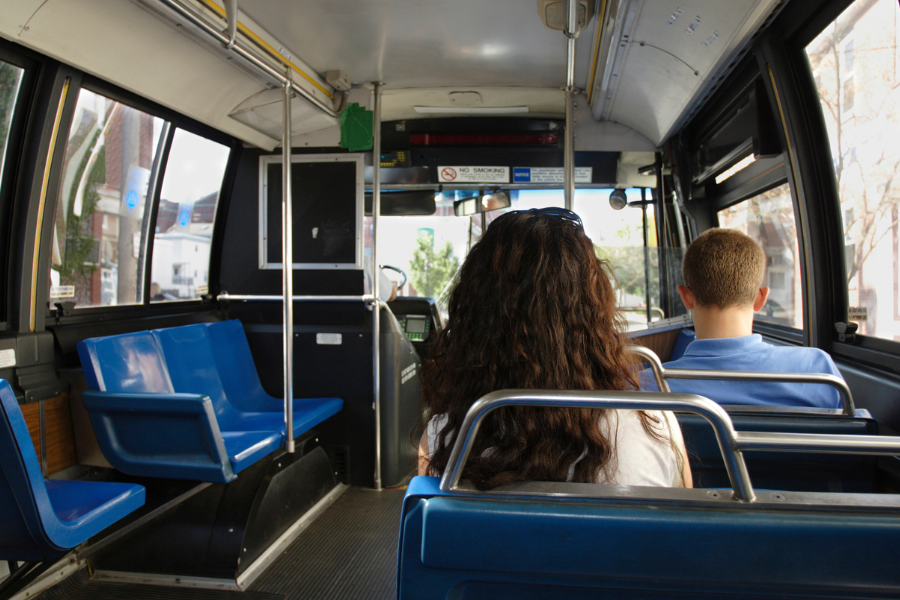When I was preparing for my arrival in Madrid, I had a few things planned for the first day. I needed to buy a new SIM card, find my apartment, get groceries, and countless other things. But before I could do any of that, I needed to get from the airport to downtown Madrid. My plan was to take the Metro, not only would it be cheaper than a taxi, but I would also get my first glance at the massive Madrid Metro system. Sure, it was a bit intimidating to try to get on the right trains will all my bags, but how hard could it really be? Google Maps told me exactly which trains to take, and that had never let me down for the MBTA in Boston. I was able to find my way to my apartment with only a few hiccups along the way, but I learned that there are some very big differences between the Madrid metro and the T.
Overview of Public Transportation in Madrid
You can get almost anywhere in Madrid using public transportation. In order to cover so much ground, three main forms of public transportation are used. The metro, buses, and Cercanías trains.
Most popular is the metro, Madrid’s underground subway system. There are 12 metro lines that connect to 302 stations, span 294 km (183 miles), and allow 75% of Madrid residents to have a metro station within 600 m of their home. Next are the buses. There are over 200 bus lines that connect the areas of Madrid that are unreachable by the metro. Finally, there are the Cercanías trains, which travel from the center of Madrid to the surrounding towns. There are 9 lines and almost 100 stations.

My Impressions
The first thing I noticed was the size and complexity of the metro stations. The stations with service to only one line are comparable in size to some T stations in Boston. However, the stations that offer service to multiple Metro lines are quite larger, going very far underground to accommodate the different tracks. And the stations that also service Cercanías trains are massive! You might need to go up more than 5 sets of escalators before exiting to the street. The main stations are always bustling with people running to catch their trains. They can be a bit overwhelming to navigate at first, especially since you can walk from one to another without going up to the street. If you aren’t paying attention you could end up on a completely different street than what you were expecting.
Another thing that stood out to me about Madrid’s public transportation was how many trains are in service. You rarely have to wait more than 5 minutes for a metro or 10 minutes for Cercanías. During rush hour, every train is full. However even with so much traffic, the stations are very clean, especially compared to Boston. The insides of metros, buses, and trains are also spotless, a nice change for someone used to riding on the T.
In my opinion, the most surprising thing about Madrid’s public transportation system is the price. You might think that with such great coverage, service, and cleanliness that prices would be high. However, single rides for the metro or bus can be bought for around 1.50€, and you can get it for less if you buy multiple trips at once. Cercanías tickets can range from 1.70€ to 8.70€, depending on how far you are traveling. However, people under the age of 26 can buy a pass that gets them on any metro, train, or bus for only 20€/month (discounted to 10€/month until January 2023). That pass is an amazing deal, especially for me because I need to take the metro and Cercanías everyday to get to class.
Overall, my experience with public transportation in Madrid has been much better than in Boston. In Boston, the T is frequently behind schedule, dirty, or has some kind of disruption to service. In Madrid, I have not experienced any of those problems. There are some places in Boston that are very hard to get to using transportation. Everywhere I have wanted to go in Madrid has been within walking distance of a metro stop.
The fact that Madrid’s public transportation system is so extensive and accessible means that fewer people need to drive cars. This in turn leads to a safer and more enjoyable city for pedestrians, allowing for the walking streets and beautiful plazas that Madrid is known for. Maybe if Boston had a better public transportation system, the city would be filled with walking streets and plazas instead of cars and traffic.










